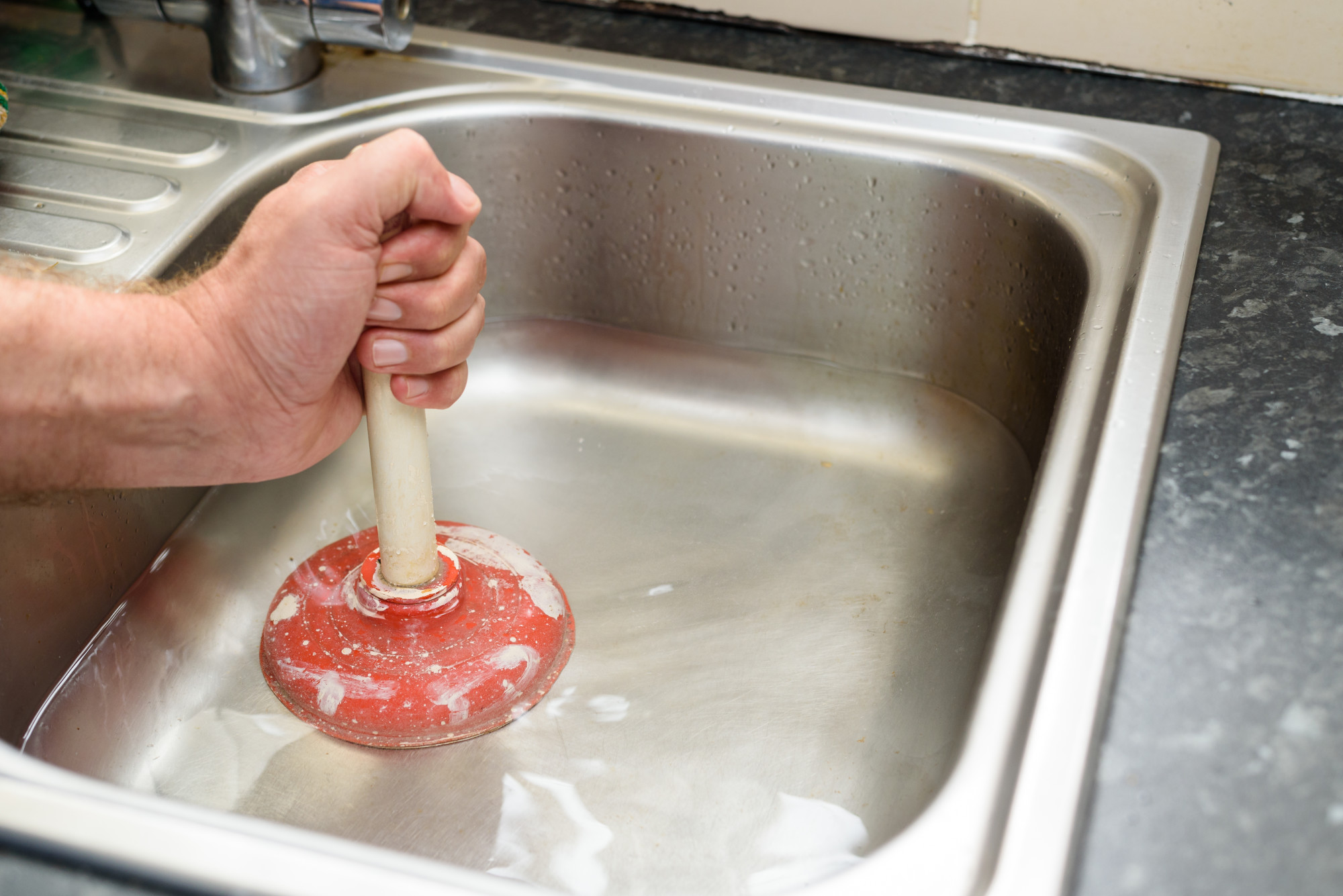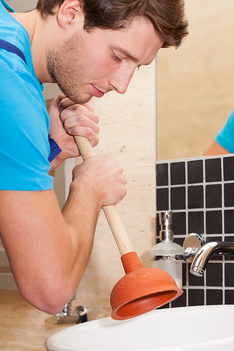Learn Plunger and Drain Cleaner: Effective Approaches
Learn Plunger and Drain Cleaner: Effective Approaches
Blog Article
What're your beliefs about How to Unclog Your Sink with a Plunger?

Introduction
Proper maintenance of household drains is crucial for preventing clogs and making certain smooth water circulation. Among the key tools in every property owner's toolkit is the plunger, together with various drainpipe cleansers designed to take on stubborn obstructions efficiently. This short article discovers exactly how to make use of plungers and drain cleansers efficiently to maintain your drains pipes flowing openly.
Area 1: Recognizing Plungers
Sorts of Plungers
There are numerous types of plungers available, each created for various types of drains and obstructs. One of the most common kinds consist of mug plungers, flange plungers, and accordion plungers.
Exactly How Plungers Work
Bettors deal with the concept of creating stress and suction to displace clogs. When properly applied over a drain, they create a vacuum that can take out debris or break up blockages.
Choosing the Right Plunger
Choosing the best bettor depends on the kind of drainpipe and the nature of the blockage. Mug plungers are perfect for sinks and bathtubs, while flange bettors are better matched for commodes because of their design.
Typical Blunders with Plungers
Avoiding these mistakes guarantees effective plunging: improper seal around the drain, inadequate pressure, and unclear bordering particles.
Area 2: Utilizing Plungers Effectively
Preparation
Before plunging, make sure the bettor covers the drainpipe completely and forms a tight seal. Clear any type of noticeable particles around the drainpipe opening.
Strategy
Beginning with gentle plunging movements to build suction. Rise stress gradually, utilizing a stable rhythm. Repeat as needed until the drain gets rid of.
Troubleshooting Tips
If plunging doesn't function, attempt changing the seal, using petroleum jelly for a far better seal, or utilizing a various sort of plunger.
Section 3: Comprehending Drainpipe Cleaning Company
Sorts Of Drainpipe Cleaning Company
Drain cleansers can be chemical or enzymatic. Chemical cleansers make use of solid chemicals to liquify obstructions, while chemical cleansers make use of all-natural enzymes to break down raw material.
How Drain Cleansers Job
Chemical cleansers respond with blockages to liquify them, while chemical cleansers break down organic products like hair and grease without harming pipelines.
Security Factors to consider
Always use handwear covers and eye defense when using chemical drain cleaners. Ensure sufficient air flow and adhere to manufacturer guidelines thoroughly.
Eco-Friendly Alternatives
Consider using vinegar and baking soft drink or enzyme-based cleaners for green alternatives that are much safer for pipelines and the setting.
Area 4: Utilizing Drain Cleaners Successfully
Application Techniques
Put chemical cleaners straight into the drainpipe opening. Permit them to work for the advised time prior to flushing with warm water. Enzymatic cleaners ought to rest over night.
Precautions
Avoid blending different types of cleansers, as this can create poisonous fumes. Never make use of chemical cleansers along with a bettor, as spilling can take place.
Taking Care Of Persistent Clogs
For consistent obstructions, consider utilizing a pipes serpent or calling a professional plumbing technician to stop damages to pipes.
Conclusion
Finally, recognizing how to utilize bettors and drain cleansers successfully is crucial for keeping healthy and balanced pipes systems. By selecting the right devices and strategies, homeowners can deal with small clogs and stop major plumbing concerns down the line.
How to Use a Plunger to Unclog a Drain
The humble plunger is a simple yet effective tool for breaking clogs in sinks, tubs and toilets. This handy tool is easy to use. You can make the most of its power if you understand how it works. Ready to dive in? Here’s what you need to know.
Safety First!
Never use a plunger with drain chemicals. Water will splash as you work, and the chemicals can spatter, burning skin and eyes. It’s a good idea to use rubber gloves and wear safety goggles when you work on a clog.
Choose the Right Tool for the Job
Plungers come in two different styles. Sinks, bathtubs and showers require a cup plunger. Like its name suggests, the rubber end is shaped like a cup. Use a flange plunger on toilets. These plungers have a rubber funnel extending from the cup. A plunger needs to be big enough to cover the drain.
Ready, Set, Plunge!
Coat the rim: Coat the plunger rim with petroleum jelly. This helps make a better seal.
Block outlets: Hold a wet rag over nearby outlets such as the overflow vent or the drain in a second sink.
Release air: Insert the plunger at an angle into the water. Water will displace air in the cup. A water-filled cup is more forceful than one filled with air.
Keep the plunger upright: Hold the plunger perpendicular to the drain. Use fast, forceful strokes, but make the first stroke gentle. The first stroke can create a splash if the cup still contains air. Thrust the plunger 15 to 20 times.
Snap off the plunger: The final stroke should be a strong upward motion that ends when the plunger snaps off the drain.
Repeat the process: you may need to repeat this sequence several times. When the water drains away, your work is done. High-five! https://plumbernw.com/blog/how-to-use-a-plunger-to-unclog-a-drain/

Application Techniques
Put chemical cleaners straight into the drainpipe opening. Permit them to work for the advised time prior to flushing with warm water. Enzymatic cleaners ought to rest over night.
Precautions
Avoid blending different types of cleansers, as this can create poisonous fumes. Never make use of chemical cleansers along with a bettor, as spilling can take place.
Taking Care Of Persistent Clogs
For consistent obstructions, consider utilizing a pipes serpent or calling a professional plumbing technician to stop damages to pipes.
Conclusion
Finally, recognizing how to utilize bettors and drain cleansers successfully is crucial for keeping healthy and balanced pipes systems. By selecting the right devices and strategies, homeowners can deal with small clogs and stop major plumbing concerns down the line.
How to Use a Plunger to Unclog a Drain
The humble plunger is a simple yet effective tool for breaking clogs in sinks, tubs and toilets. This handy tool is easy to use. You can make the most of its power if you understand how it works. Ready to dive in? Here’s what you need to know.
Safety First!
Never use a plunger with drain chemicals. Water will splash as you work, and the chemicals can spatter, burning skin and eyes. It’s a good idea to use rubber gloves and wear safety goggles when you work on a clog.
Choose the Right Tool for the Job
Plungers come in two different styles. Sinks, bathtubs and showers require a cup plunger. Like its name suggests, the rubber end is shaped like a cup. Use a flange plunger on toilets. These plungers have a rubber funnel extending from the cup. A plunger needs to be big enough to cover the drain.
Ready, Set, Plunge!
Coat the rim: Coat the plunger rim with petroleum jelly. This helps make a better seal. Block outlets: Hold a wet rag over nearby outlets such as the overflow vent or the drain in a second sink. Release air: Insert the plunger at an angle into the water. Water will displace air in the cup. A water-filled cup is more forceful than one filled with air. Keep the plunger upright: Hold the plunger perpendicular to the drain. Use fast, forceful strokes, but make the first stroke gentle. The first stroke can create a splash if the cup still contains air. Thrust the plunger 15 to 20 times. Snap off the plunger: The final stroke should be a strong upward motion that ends when the plunger snaps off the drain. Repeat the process: you may need to repeat this sequence several times. When the water drains away, your work is done. High-five! https://plumbernw.com/blog/how-to-use-a-plunger-to-unclog-a-drain/

I discovered that blog posting on How to Unclog Your Sink with a Plunger when browsing the internet. Please take the time to share this blog if you enjoyed reading it. I praise you for your time. Return soon.
Quote Report this page